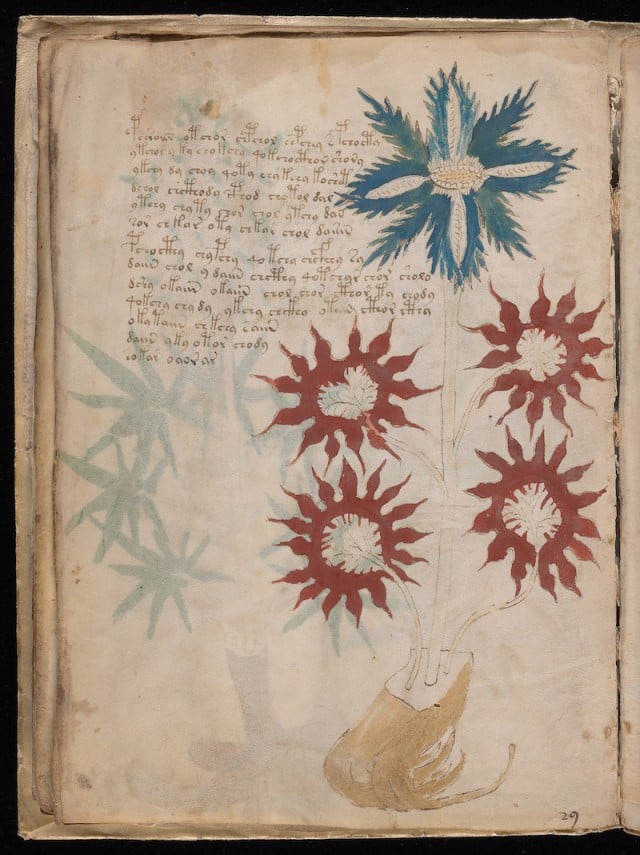Art & Exhibitions
The Voynich Code, Far Better Than Da Vinci’s
THE DAILY PIC: Around the year 1425, someone labored to make an indecipherable book.

THE DAILY PIC: Around the year 1425, someone labored to make an indecipherable book.

Blake Gopnik


If you can’t read the script on this sheet, it’s not because you lack language skills or never studied antique texts. No one can read it, or, as far as we know, ever has. It’s one of the more than 200 pages that survive from the so-called Voynich Manuscript, now firmly dated to the 1410s or ’20s and residing in the Beinecke rare book library at Yale. The Beinecke has lent it out, for the first time ever, to an exhibition called “Decoding the Renaissance,” at the Folger Library in Washington. The show looks at the long history of codes and cryptography, and especially at the fruitless attempts of William F. Friedman—the brilliant chief cryptologist for the US government from the 1920s to the 1950s—to decode the Voynich script. Some people think there is nothing encoded in it at all, and that it’s some kind of hoax. (Though what they mean by that isn’t always clear.) Others, including Friedman, come to the conclusion that to be as unbreakable a code as it is, the Voynich script must be in an entirely novel language, constructed according to unknown rules. (It’s far easier to decode something that’s just a cypher for a known language than to figure out a language that isn’t known at all.) But almost everyone acts as though those two poles—nonsense or good sense —are where our discussion of the book has to tend. Whereas I think that what’s most interesting is figuring out what it would mean, for someone in the Renaissance, to make a laboriously crafted book of either kind. Whether the Voynich manuscript encodes content or not, there’s real and very special cultural meaning in the simple act of making a giant book—the only book like it in that era—that no one else can read. That, it seems to me, is what’s worth deciphering. (Image courtesy the Beinecke Rare Book and Manuscript Library, Yale University)
For a full survey of past Daily Pics visit blakegopnik.com/archive.